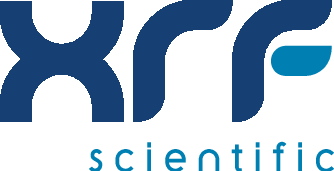Optimizing Fusion Bead Preparation for High-Precision XRF Analysis
Reliable XRF analysis begins with sample preparation, where the chosen technique determines the accuracy, repeatability, and overall quality of the results. Out of all the available methods, like pressed pellets and loose powders, fusion bead preparation is often preferred for its ability to deliver high-precision results by fully dissolving the sample into a stable glass matrix. When undertaken correctly, this type of sample preparation ensures consistency, reduces matrix effects, and enables accurate quantitative XRF measurements across a wide range of sample types, which is why optimizing fusion bead preparation is fundamental to achieving reliable and consistent XRF analysis.
Why Fusion Bead Preparation Improves the Accuracy of XRF Analysis
The effectiveness of any XRF analysis not only depends on the instrument used to measure the sample, but on the quality of the preparation method. Fusion bead preparation produces a chemically stable, glass-like matrix that eliminates many of the variables that affect other techniques, such as particle size distribution, mineralogical variation, and surface roughness. It fully dissolves the sample into a uniform structure, removing physical inconsistencies that cause signal scatter, reduce reproducibility, and produce mismatches between standards and samples that appear as calibration drift.
A high level of uniformity established through fusion bead preparation enables precise, matrix-matched calibration and supports analytical accuracy typically within 1% in XRF analysis. It also yields a smooth, interference-free surface that improves spectral resolution and reduces background noise. With so many advantages to using fusion bead preparation in XRF analysis, it’s important to consider how the process can be refined. Careful optimization at the different stages of fusion bead preparation helps ensure consistent analytical performance, particularly when dealing with complex or variable sample compositions.
Core Steps for Optimizing Fusion Bead Preparation in XRF Analysis
1. Sample Conditioning
Reproducible fusion bead formation begins with finely ground samples, ideally less than 100 μm in size, to ensure complete dissolution during melting. Once ground, samples should be dried at 110 ± 5 °C and stored in a desiccator to eliminate moisture that could interfere with the fusion process. For materials containing volatile components, ignition at 1050°C stabilizes the sample mass and simplifies loss-on-ignition (LOI) correction, which is critical for maintaining analytical accuracy.
Together, these measures ensure proper control of particle size and moisture content, two factors that strongly influence the melting behavior of the sample-flux mixture and set the stage for consistent, high-quality fusion bead formation. By establishing such parameters at the outset, analysts can prevent issues like incomplete fusion, irregular bead surfaces, and variability in measurement results during XRF analysis.
2. Selecting the Right Flux
Flux selection is central to optimizing fusion bead preparation for high-precision XRF analysis, as it directly influences bead stability and analytical accuracy:
- Li₂B₄O₇- suited to basic or refractory matrices.
- LiBO₂- preferred for acidic or silicate-rich samples.
- Mixed ratios (e.g., 66:34): provide flexibility for complex compositions.
Before use, flux must be dried at 100-120°C to remove surface moisture that could introduce variability during fusion. The flux-to-sample ratio, typically set at 10:1 or 20:1, directly influences dissolution efficiency, dilution, and matrix matching, all of which impact calibration accuracy in XRF analysis. Managing these conditions allows laboratories to achieve stable bead formation, improve the reproducibility of high-precision XRF analysis, and minimize matrix effects.
3. Reagents and Additives
Certain additives are used to stabilize the fusion process and enhance bead quality in high-precision XRF analysis:
- Oxidizers (e.g., LiNO₃): prevent crucible attack and ensure the complete oxidation of samples.
- Releasing agents (e.g., LiI): assist with bead release from molds, though they may introduce spectral interferences in the iodine/halogen region that require correction.
- Modifiers (e.g., LiF and La₂O₃): adjust melt viscosity and facilitate more accurate calibration.
Both reagents and additives must be measured with precision since even small dosing errors can affect bead uniformity and compromise the accuracy of high-precision XRF analysis. To optimize outcomes, laboratories should standardize dosing procedures and regularly calibrate equipment to ensure the consistent handling of reagents and additives, which ultimately enables reliable fusion bead preparation.
4. Fusion and Casting
During fusion and casting, conditions must be carefully controlled to produce stable, defect-free beads for high-accuracy XRF analysis. Fusion is typically performed at 1000-1200°C with agitation to facilitate complete dissolution and remove air bubbles. The molten mixture is then poured into molds preheated to about 800°C to reduce cracking, followed by a controlled cooling cycle that delivers smooth surfaces and consistent bead quality. Thorough mixing at each stage improves homogenization, which in turn enhances spectral resolution and decreases detection limits, both critical factors in optimizing fusion bead preparation for high-precision XRF analysis.
Precise XRF Analysis Through Robust Sample Preparation
Optimizing fusion bead preparation is crucial for realizing the full potential of high-precision XRF analysis. When its key stages are refined, they establish uniform bead formation, improve calibration stability, and lower the risk of analytical drift. XRF Scientific provides the tools to support such optimization, offering high-performance fusion equipment, certified fluxes, and robust platinumware engineered to deliver consistent, reliable data. Reach out to our experts now to uncover more information about our products and how they can help you enhance sample preparation for greater accuracy and reproducibility.




